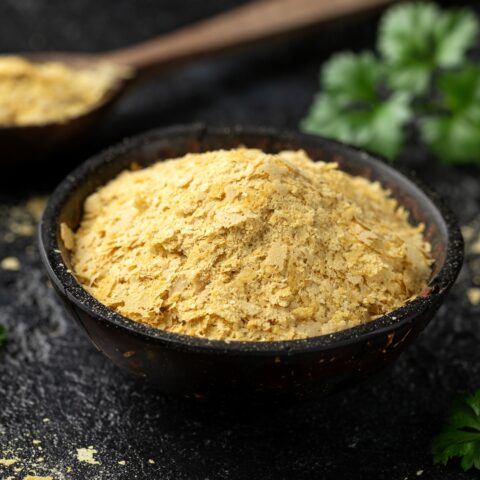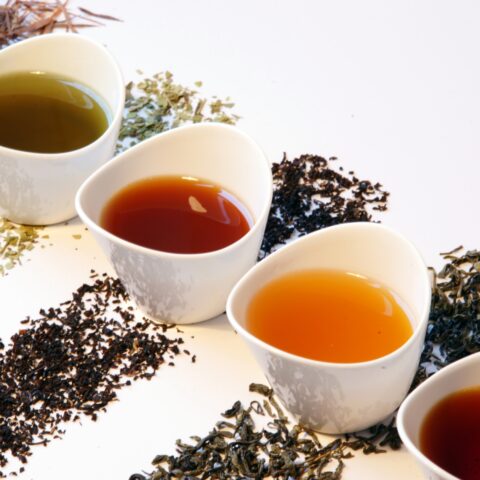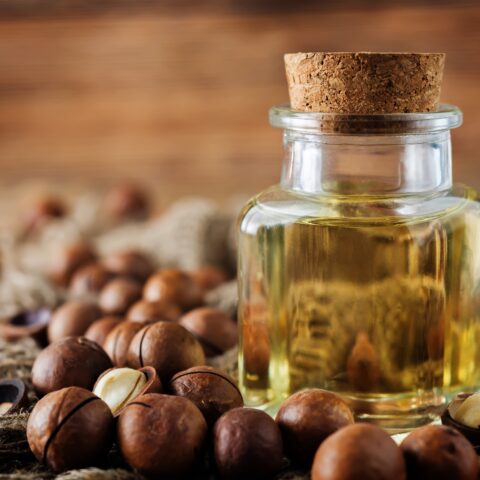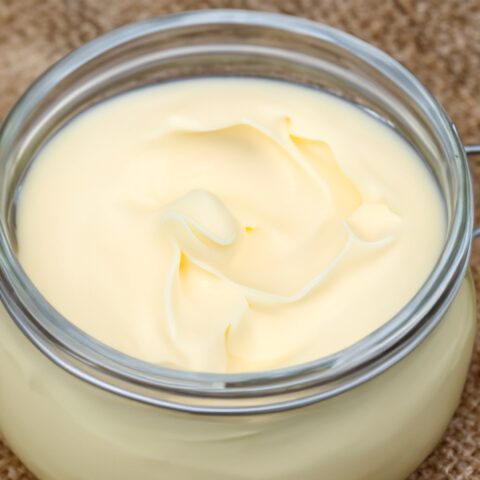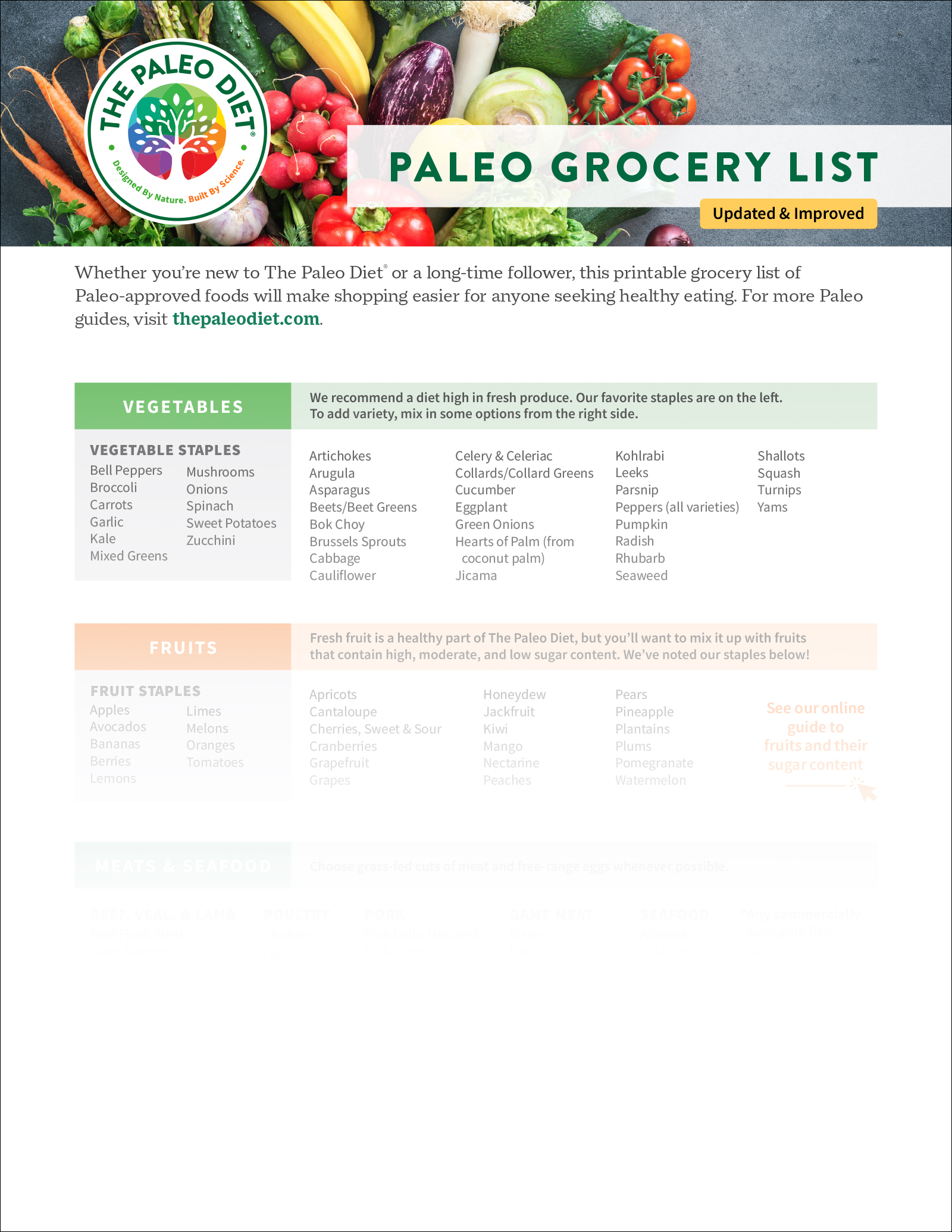Do You Need to Supplement with Vitamin D?
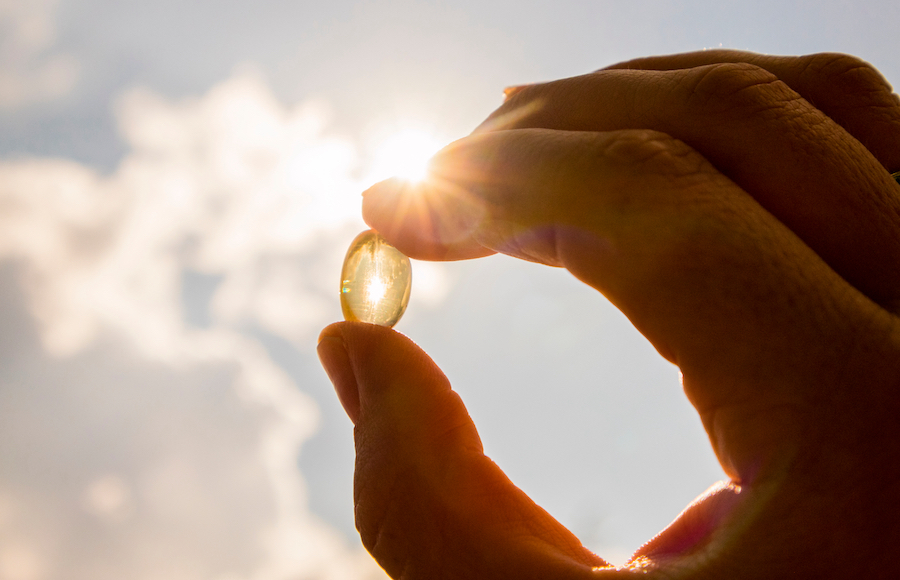
One of the most persuasive aspects of The Paleo Diet® is that you will not have to waste your hard-earned dollars on supplements. Once you get going on this lifetime program of eating, except for vitamin D and possibly fish oil, you will achieve all of the daily recommended intakes recommended by governmental agencies from just the food you eat.1, 2 As we come out of wintertime and into early spring, the possibility exists that many of us may need to supplement with vitamin D in order to not be deficient.5-11
Why is this? When we eat the foods that mother nature intended, why should we be deficient in any nutritional element? Vitamin D is actually not a vitamin, but rather is a hormone naturally formed in our skins when we expose ourselves to the ultraviolet radiation of the sun. In much of the Northern Hemisphere, we receive scant to little sunshine in the dead of winter, and consequently our body stores of this essential hormone become depleted as we go from fall to winter to early spring.5-11
Food never was or never could have been the primary source of the hormone, vitamin D, which is essential for optimal human health.
Vitamin D-Rich Foods
Table 1 below lists the content of the most concentrated sources of vitamin D in real, non-fortified foods. Careful examination of this table makes it clear that, except for salmon or fresh tuna,12 it is difficult or even impossible to achieve recommended vitamin D intakes (600 IU or greater per day),10, 11, 14 with real, non-fortified foods.
Table 1. The most concentrated sources of vitamin D in real, non-fortified foods in the Western diet.
| Food | Vitamin D (per 100g) | kcal | Vit D IU/kcal | Vit D IU/100 kcal |
| Cod Liver Oil | 10,000 IU | 902 | 11.09 | 1109 |
| Channel Catfish, (wild, dry heated) | 568 IU | 105 | 5.41 | 541 |
| Bluefin Tuna (fresh, wild, baked/broiled) | 920 IU | 184 | 5.00 | 500 |
| Coho/Silver Salmon (wild, baked/broiled) | 676 IU | 139 | 4.86 | 486 |
| Chinook/King Salmon (wild, baked) | 904 IU | 231 | 3.91 | 391 |
| Fish Eggs/Roe (mixed species) | 484 IU | 143 | 3.38 | 338 |
| Sockeye Salmon (wild, dry heated) | 526 IU | 169 | 3.11 | 311 |
| Pacific Oysters (steamed) | 320 IU | 163 | 1.96 | 196 |
| Atlantic Salmon (wild, baked) | 328 IU | 182 | 1.80 | 180 |
| Atlantic or Pacific Halibut (baked) | 192 IU | 140 | 1.37 | 137 |
| Atlantic Salmon (farmed, baked) | 272 IU | 206 | 1.32 | 132 |
| Oyster Mushrooms (raw) | 36 IU | 33 | 1.09 | 109 |
| Herring | 216 IU | 203 | 1.06 | 106 |
| Yellow Fin or Albacore Tuna (baked/broiled) | 140 IU | 139 | 1.01 | 101 |
| Sardines in Oil | 193 IU | 208 | 0.93 | 93 |
| Tuna (canned in water) | 80 IU | 128 | 0.63 | 63 |
| Portabella Mushrooms (raw) | 12 IU | 22 | 0.55 | 55 |
| Shiitake Mushrooms (raw) | 18 IU | 34 | 0.53 | 53 |
| Egg Yolks | 187 IU | 351 | 0.53 | 53 |
| Atlantic Cod (dry heated) | 46 IU | 105 | 0.44 | 44 |
| Beef Kidney | 68 IU | 159 | 0.43 | 43 |
| Mackerel | 104 IU | 262 | 0.40 | 40 |
| Pork Liver | 52 IU | 134 | 0.39 | 39 |
| White Mushrooms | 7 IU | 22 | 0.32 | 32 |
| Beef Liver | 49 IU | 175 | 0.28 | 28 |
| Pacific Cod (dry heated) | 24 IU | 85 | 0.28 | 28 |
| Turkey Liver | 72 IU | 273 | 0.26 | 26 |
| Salmon Oil | 177 IU | 902 | 0.20 | 20 |
| Filet Mignon | 36 IU | 211 | 0.17 | 17 |
| Chicken Liver | 16 IU | 119 | 0.13 | 13 |
| Pork Loin | 34 IU | 273 | 0.12 | 12 |
| Lamb Liver | 16 IU | 139 | 0.12 | 12 |
| Lamb Rib Roast (lean) | 24 IU | 232 | 0.10 | 10 |
| Enoki Mushrooms (raw) | 4 IU | 44 | 0.09 | 9 |
| Bacon | 42 IU | 541 | 0.08 | 8 |
| Channel Catfish (farmed, dry heated) | 10 IU | 144 | 0.07 | 7 |
| Mussels | 11.2 IU | 172 | 0.07 | 7 |
| Pork Kidney | 8 IU | 151 | 0.05 | 5 |
At the top of the list for natural foods is cod liver oil, which at first appears to be a great source of vitamin D. It is, but unfortunately it also contains high levels of vitamin A which competes with our bodies’ metabolisms for vitamin D and may impair vitamin D metabolism.13 A better choice is fish oil from the body of fish, rather than the liver. It also contains vitamin D and the healthful long-chain omega-3 fatty acids (EPA and DHA) without the higher concentrations of vitamin A.
From a historical perspective, fish oil (whether derived from cod liver oil or only the body of fish) was consumed by the Vikings (circa 700s to 1100 AD) but was not commercially manufactured until relatively recently; about 200–300 years ago.
Accordingly, the Paleo Diet paradigm suggests that (as a species) if we consumed vitamin D from food, it must have come from other sources. Table 1 indicates that salmon is a concentrated source of vitamin D, and if we consume roughly ¼ pound of salmon or more per day,12 we may be able to achieve low-level vitamin D balance. But who do you know who eats a quarter pound or more of salmon a day in the 21st century?
As you move on down the list of foods in Table 1 from salmon, it becomes increasingly obvious that with our modern tastes and diets, few people could achieve vitamin D balance on any normal diet before modern, fortified foods (i.e., milk, margarine, and processed foods) were introduced in about the 1930s and 1940s. Organ meats won’t do it, eggs won’t do it, shellfish won’t do it, and meat won’t do it. The obvious implications of Table 1 is that food never was or never could have been the primary source of vitamin D, which is essential for optimal human health. Even from milk and dairy products.
Is Dairy a Good Source of Vitamin D?
To even suggest that milk is a good source of vitamin D is a total stretch of the facts. The Institute of Medicine Daily’s recommended intake for vitamin D is 600 IU per day for most people.14 Although this advice represents a substantial increase from previous estimates, it still falls far short of human experimental evidence showing that at least 2,000 IU per day is required to keep blood levels of vitamin D at the ideal concentration of 30 ng/ml.6, 7, 10 See Table 2 below.
The best way to get your vitamin D is not by drinking milk, but rather by getting a little daily sun exposure as nature intended.
Table 2. Vitamin D blood concentrations.
| Blood Levels of Vitamin D | Classification |
| <20 ng/ml | Deficient |
| 21 to 29 ng/ml | Insufficient |
| 30 to 59 ng/ml | Sufficient |
| 60 ng/ml | Maximal with sunlight exposure |
An 8-ounce glass of raw milk (280 calories) straight from the cow without fortification gives you a paltry 3.6 IU of vitamin D. At this rate, you’d have to drink a ridiculous 167 glasses of milk just to achieve the daily recommendation. Because most of the milk we drink is fortified with vitamin D, then an 8 oz glass typically yields 100 IU of this nutrient. However, even with fortification, you would have to drink six glasses (1,680 calories or ~75% of your daily caloric intake) of milk to meet the daily requirement for vitamin D. If you wanted to reach the 2,000 IU level as suggested by the world’s best vitamin D researchers, you would have to drink 20 glasses of fortified milk, amounting to 5,600 calories. No one in their right mind would drink 20 glasses of milk a day, even if they could.
As you can see from these simple calculations, whether fortified or raw, milk is an abysmal source of vitamin D. The best way to get your vitamin D is not by drinking milk, but rather by getting a little daily sun exposure as nature intended.
Sunlight Exposure
Lifeguards and other outdoor workers can achieve blood concentrations that top out at about 60 ng/ml. But you really don’t need values this high. Most experts agree that values higher than 30 ng/ml will significantly reduce your risk for cancer and other diseases associated with low vitamin D status. 15-21
The good news is that daily sunlight exposure in the summertime for short periods of 15-30 minutes will rapidly boost your blood levels of vitamin D above 30 ng/ml; something that cannot be achieved with diet alone because almost all real foods that we commonly eat contain little or no vitamin D.
RELATED: How to Practice Sun Safety and Still Get Enough Vitamin D
Should You Supplement with Vitamin D?
For many of us, regular sunlight exposure is a luxury that is difficult or impossible to come by on a year-round basis. Obviously, our hunter-gatherer ancestors living at low to moderate latitudes did not have this problem. Consequently, you will need to supplement your diet with vitamin D3 capsules.
If we look at the official governmental recommendation for vitamin D intake (between 400 and 600 IU), however, it is unfortunately inadequate. The most recent human experiments show that blood levels of 30 ng/ml could never be achieved with vitamin intakes between 400 and 600 IU.6, 7, 10, 11
In fact, a recent series of articles and reviews published in Nutrients demonstrated that the 600 IU recommendation was based on a misinterpretation of the data and was an order of magnitude too low. A meta-analysis of existing studies conservatively estimated daily needs of 1885, 2802, and 6235 IU for normal weight, overweight, and obese individuals, respectively.22-24
The majority of men, women, and children in the U.S. maintains blood levels of vitamin D which are either deficient or insufficient.6-11 Hence, one of the best strategies you can take with adopting The Paleo Diet is to supplement with vitamin D3 daily if you are unable to get sunshine on a regular basis. Most vitamin D experts agree that daily supplementation of at least 2,000 IU of vitamin D3 daily is necessary to achieve healthful blood levels of 30 ng/ml or greater.
References
[1] Cordain L. The Paleo Answer. John Wiley & Sons, New York, NY, 2012.
[2] Cordain L. The nutritional characteristics of a contemporary diet based upon Paleolithic food groups. J Am Neutraceut Assoc 2002; 5:15-24.
[3] Cordain L, Eaton SB, Sebastian A, Mann N, Lindeberg S, Watkins BA, O’Keefe JH, Brand-Miller J. Origins and evolution of the western diet: Health implications for the 21st century. Am J Clin Nutr 2005;81:341-54.
[4] O’Keefe JH, Bergman N, Carrera-Basto P, Fontes-Villalba M, DiNicolantonio JJ, Cordain L. Nutritional strategies for skeletal and cardiovascular health: hard bones, soft arteries, rather than vice versa. Open Heart 2016;3: e000325. doi:10.1136/ openhrt-2015-000325 (in press).
[5] Binkley N, Novotny R, Krueger D, Kawahara T, Daida YG, Lensmeyer G, Hollis BW, Drezner MK. Low vitamin D status despite abundant sun exposure. J Clin Endocrinol Metab. 2007 Jun;92(6):2130-5.
[6] Holick MF, Chen TC: Vitamin D deficiency: a worldwide problem with health consequences. Am J Clin Nutr. 2008 Apr;87(4):1080S-6S.
[7] Hollis BW. Circulating 25-hydroxyvitamin D levels indicative of vitamin D sufficiency: implications for establishing a new effective dietary intake recommendation for vitamin D. J Nutr. 2005 Feb;135(2):317-22.
[8] Kumar J, Muntner P, Kaskel FJ, Hailpern SM, Melamed ML. Prevalence and associations of 25-hydroxyvitamin D deficiency in US children: NHANES 2001-2004. Pediatrics. 2009 Sep;124(3):e362-70.
[9] Melamed ML, Kumar J. Low levels of 25-hydroxyvitamin D in the pediatric populations: prevalence and clinical outcomes. Ped Health. 2010 Feb;4(1):89-97.
[10] Vieth R. Why the optimal requirement for vitamin D3 is probably much higher than what is officially recommended for adults. J Steroid Biochem Mol Biol 2004; 89-90:575-9.
[11] Bischoff-Ferrari HA. Optimal serum 25-hydroxyvitamin D levels for multiple health outcomes. Adv Exp Med Biol. 2008;624:55-71
[12] Lu Z, Chen TC, Zhang A, Persons KS, Kohn N, Berkowitz R, Martinello S, Holick MF. An evaluation of the vitamin D3 content in fish: Is the vitamin D content adequate to satisfy the dietary requirement for vitamin D? J Steroid Biochem Mol Biol. 2007 Mar;103(3-5):642-4. Epub 2007 Jan 30.
[13] Cannell JJ, Vieth R, Willett W, Zasloff M, Hathcock JN, White JH, Tanumihardjo SA, Larson-Meyer DE, Bischoff-Ferrari HA, Lamberg-Allardt CJ, Lappe JM, Norman AW, Zittermann A, Whiting SJ, Grant WB, Hollis BW, Giovannucci E. Cod liver oil, vitamin A toxicity, frequent respiratory infections, and the vitamin D deficiency epidemic. Ann Otol Rhinol Laryngol. 2008 Nov;117(11):864-70.
[14] Institute of Medicine. Dietary Reference Intakes for Calcium and Vitamin D [Internet]. Washington, D.C.: National Academies Press; 2011. Available from: https://www.nap.edu/read/13050/chapter/1
[15] Dobnig H, Pilz S, Scharnagl H, Renner W, Seelhorst U, Wellnitz B, Kinkeldei J, Boehm BO, Weihrauch G, Maerz W. Independent association of low serum 25-hydroxyvitamin d and 1,25-dihydroxyvitamin d levels with all-cause and cardiovascular mortality. Arch Intern Med. 2008 Jun 23;168(12):1340-9.
[16] Field S, Newton-Bishop JA. Melanoma and vitamin D. Mol Oncol. 2011 Feb 3. [Epub ahead of print]
[17] Forouhi NG, Luan J, Cooper A, Boucher BJ, Wareham NJ. Baseline serum 25-hydroxy vitamin D is predictive of future glycaemic status and insulin resistance: The MRC Ely prospective study 1990-2000. Diabetes. 2008 Oct;57(10):2619-25.
[18] Holick MF. Vitamin D and sunlight: strategies for cancer prevention and other health benefits. Clin J Am Soc Nephrol 2008;3:1548-54.
[19] Holick MF. Optimal vitamin d status for the prevention and treatment of osteoporosis. Drugs Aging. 2007; 24(12):1017-29.
[20] Plum LA, DeLuca HF. Vitamin D, disease and therapeutic opportunities. Nat Rev Drug Discov. 2010 Dec;9(12):941-55
[21] Sharief S, Jariwala S, Kumar J, Muntner P, Melamed ML. Vitamin D levels and food and environmental allergies in the United States: Results from the National Health and Nutrition Examination Survey 2005-2006. J Allergy Clin Immunol. 2011 Feb 15.
[22] Heaney, R., et al., Letter to Veugelers, P.J. and Ekwaru, J.P., A Statistical Error in the Estimation of the Recommended Dietary Allowance for Vitamin D. Nutrients 2014, 6, 4472-4475; doi:10.3390/nu6104472. Nutrients, 2015. 7(3): p. 1688-1690.
[23] Veugelers, P.J. and J.P. Ekwaru, A Statistical Error in the Estimation of the Recommended Dietary Allowance for Vitamin D. Nutrients, 2014. 6(10): p. 4472-4475.
[24] Veugelers, P.J., T.M. Pham, and J.P. Ekwaru, Optimal Vitamin D Supplementation Doses that Minimize the Risk for Both Low and High Serum 25-Hydroxyvitamin D Concentrations in the General Population. Nutrients, 2015. 7(12): p. 10189-10208.
